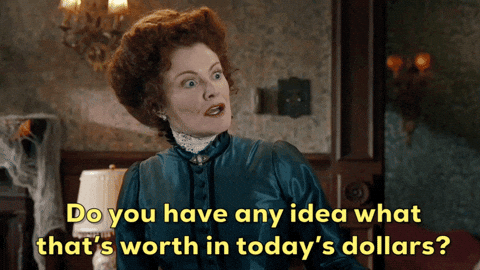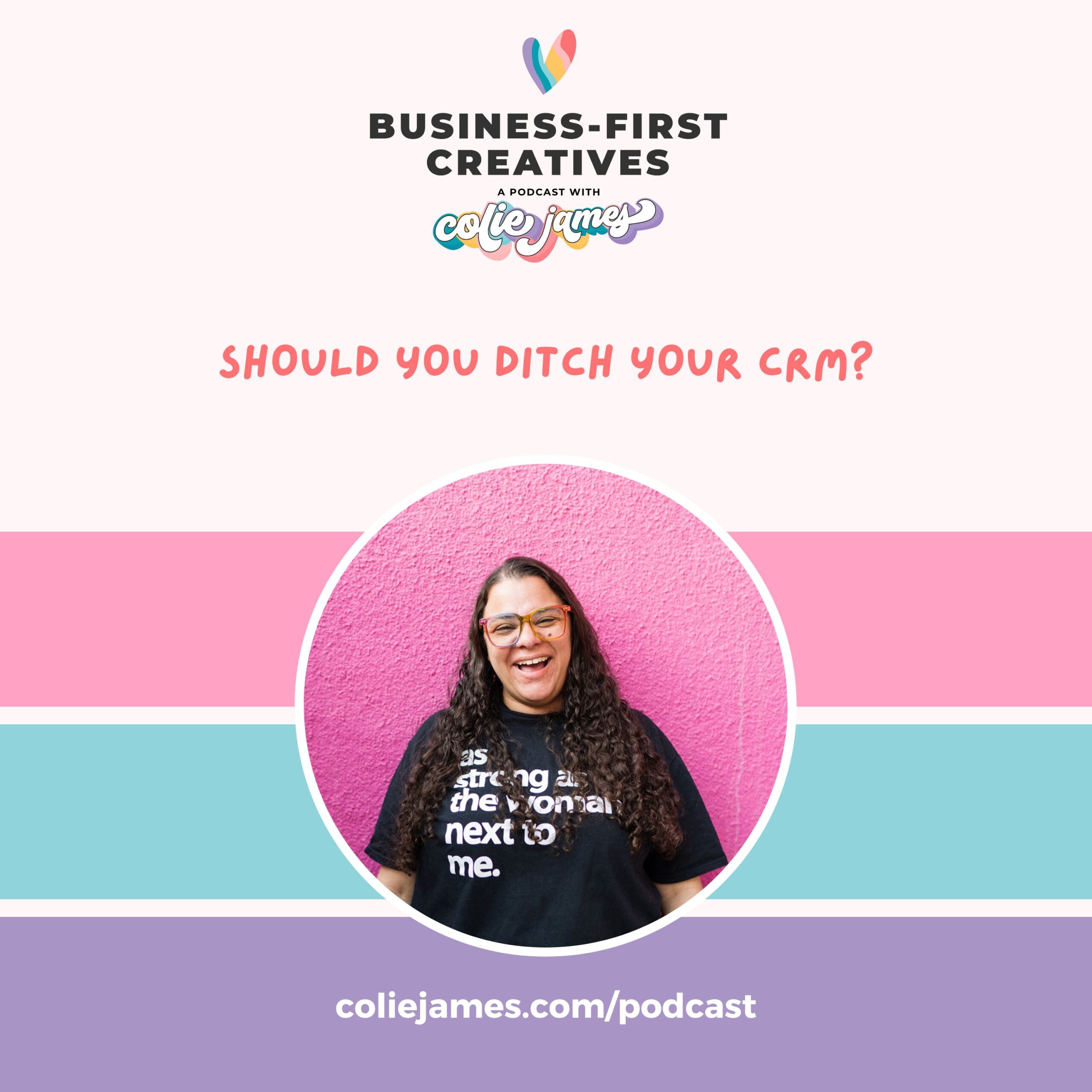Finally stop overthinking what to say and when. This free guide helps you write clear, consistent emails that sound like you — and build trust without burnout.
GRAB THE Client Experience Email GUIDE!
Blog Categories
A podcast where you join me (Colie) as I chat about what it takes to grow a sustainable + profitable business.
Business-First Creatives Podcast
CRM Guru, Family Filmmaker, and Host of the Business-First Creatives podcast. I help creative service providers grow and streamline their businesses using Dubsado, Honeybook, and Airtable.
Hey, I'm Colie
Every time a CRM announces a price increase, the online business world collectively panics. My Threads feed has been full of people asking if they should switch to a different platform—or ditch their CRM altogether.
And honestly? I get it. When HoneyBook raised its prices last year, everyone’s question was “should I switch from Honeybook to Dusbado“? But now that Dubsado has followed suit, it’s easy to feel software fatigue and question your tech stack.
But before you cancel your subscription in protest, let’s take a deep breath and talk about what your CRM is actually doing for you (and why $40–$55 a month is still a bargain).
The Price-Increase Panic
Every time a major tool raises prices—email platforms, schedulers, CRMs—there’s a ripple effect. Suddenly everyone starts re-evaluating the software they use, wondering, “Do I really need this?”
But here’s the thing: price increases are a normal cost of doing business. Software companies improve features, add support, and yes, raise rates. In the last sixty days alone, at least three email-marketing tools have done the same thing.
So rather than react, I want you to pause and evaluate: what is your CRM actually worth to your business?

What Your CRM Really Does for You
Let’s name it: the core features most photographers and creative service providers use in their CRMs include:
- Client communication — automated emails, forms, and reminders
- Invoicing and payments — getting paid on time (without the awkward chase)
- Scheduling — clients book themselves without the back-and-forth
- Basic task/project management — enough to keep things organized
- Workflows and automations — your invisible assistant keeping things moving
- Contracts — built-in legal protection that’s part of the booking flow
- Intake forms and questionnaires — gathering client info the easy way
That’s a lot of functionality bundled into one tool. Could you technically recreate all that using a handful of different apps? Sure. But by the time you add up the free trials, Zapier zaps, and monthly subscriptions, you’ll still be spending a similar amount—or more—with a lot more stress attached.
Because what your CRM truly gives you is centralization, organization, and seamless automation. And that combo is priceless.

The DIY Temptation (and Its Hidden Cost)
Can you build your own “Frankenstein” system out of Airtable, Calendly, Docusign, and Thrivecart? Absolutely. I run about 95% of my business operations inside Airtable + Thrivecart now—but that doesn’t mean it should replace your CRM.
Before you start duct-taping together six tools, ask yourself three key questions:
1️⃣ How tech-savvy are you—really?
If a Zap breaks or a Stripe payment fails, who do you call? With an all-in-one CRM, you contact support. With your custom setup, you are the tech team.
2️⃣ Are you making it inconvenient for your clients?
Every extra step—one link to schedule, another to sign, another to pay—adds booking friction.
Your goal should be a five-minute booking process, not a scavenger hunt. Each time you change platforms or send another link, you increase the chance of a dropped ball.
3️⃣ What’s the real cost of your time and energy?
Saving $15 a month might sound smart, but managing five apps, multiple logins, and endless connections? That’s time you’ll never get back.
Cheap software costs more when it drains your energy and creates confusion for clients.
The Exceptions (and When It Might Make Sense)
If you’re running group programs or multi-client containers, Airtable or another project-tracking tool might make sense on the management side.
But even then, I still recommend keeping your CRM for one-to-one booking and payment.
That’s the foundation of a smooth client journey—and one of the easiest places to lose trust if it feels messy.
The Smarter Way Forward
If you’re still itching to cancel your CRM, do these three things first:
1️⃣ Audit Your Usage
List the features you’re actually using—and the ones you’re not.
Are there automations or tools you’ve ignored that could make your system more valuable?
Sometimes it’s not that your CRM isn’t worth the cost… you just haven’t tapped into its full potential.
2️⃣ Evaluate Client Friction
How easy is your current process, really?
Could you make it faster, simpler, or more intuitive without switching platforms?
3️⃣ Get Strategic Advice Before You Jump
Before you spend hours rebuilding your backend in Airtable or Zapier, talk to a systems strategist (hey, that’s what I do inside Systems in Session).
A quick audit can save you weeks of frustration and help you decide if your CRM simply needs a tune-up, not a full replacement.
Can Google Workspace Replace Your CRM?
I’ve seen at least 5 people ask this question on Threads recently, and while Google Workspace has been rolling out more CRM-like features, it is not a viable option for most to replace your CRM.
Here’s what Google Workspace gives you:
- Google Calendar to schedule appointments (and yes, you can even charge using Stripe)
- Google Docs for contracts and signatures
- Google Forms to collect client information
- Google Sheets to track client information
- Google Meet for client calls and consultations
Each of these tools works fine on its own for individual parts of your process—but they can’t organize, connect, or automate them in a way that gives your clients a seamless experience. You’d be the one managing every moving piece, sending multiple links, and hoping nothing falls through the cracks.
The bottom line? Google Workspace wasn’t built to be your full client-management system.
It’s a great suite of tools to support your operations, but it’s not designed to handle the automations, centralization, or client experience that a dedicated CRM can.
If your goal is a smooth, professional, five-minute booking process that builds trust and reduces friction, your CRM is still the better investment.
TLDR 👍🏽
Yes, prices go up. But the value of having a centralized, automated, client-friendly backend far outweighs the extra $10 or $15 a month.
So before you ditch your CRM, ask yourself: Is this really about cost?
Or is it time to finally optimize the system you already have?
Because the goal isn’t a cheaper setup.
It’s a smarter one that keeps your business running smoothly while you live your life.
Mentioned in this Episode
👏🏽 Join me for Untapped Revenue on Wednesday, Nov 12th at 12pm MT/2pm ET
